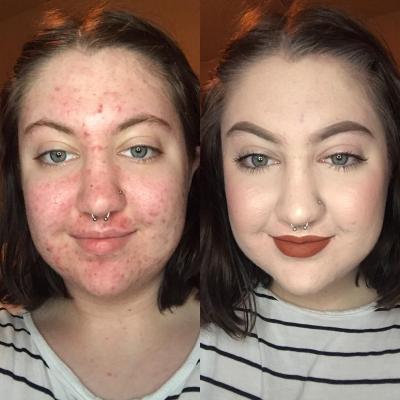Introduction to Etsy Entrepreneurship for Minors
Starting a business on Etsy can be an exciting and rewarding venture, especially for minors who are eager to explore their entrepreneurial spirit. Etsy, a popular online marketplace known for handmade, vintage, and unique items, provides a platform where young entrepreneurs can showcase their creativity and skills. This guide will walk you through the essentials of setting up and running an
Also Read This: Mastering Rumble Mid for Victory with Precision and Timing
Understanding Etsy: What You Need to Know

Etsy is a global online marketplace that allows individuals to buy and sell unique, handmade, vintage items, and craft supplies. For minors looking to venture into entrepreneurship, understanding the key aspects of Etsy is crucial. Here’s a comprehensive overview to help you get started:
What Makes Etsy Unique?
Etsy stands out from other e-commerce platforms due to its focus on:
- Handmade Items: Products created by the seller or their team.
- Vintage Goods: Items that are at least 20 years old.
- Craft Supplies: Materials used to create art and craft projects.
Key Features of Etsy
| Feature | Description |
|---|---|
| Shop Setup | Easy process to create your own shop with customizable options for branding and listing products. |
| Fees | Etsy charges listing fees of $0.20 per item and takes a 6.5% commission on sales. |
| Payment Processing | Etsy provides a secure payment system through Etsy Payments or PayPal. |
| Marketing Tools | Features like promoted listings, social media integration, and analytics to boost visibility. |
Who Can Sell on Etsy?
While Etsy is open to anyone interested in selling unique items, there are some specific requirements:
- Age Requirement: Sellers must be at least 18 years old. Minors can sell with the help of a parent or guardian who manages the shop.
- Legal Considerations: It’s important to understand the legal aspects, including tax obligations and business permits, which often require adult oversight.
Benefits of Selling on Etsy
- Creative Freedom: Express your creativity and showcase your unique products.
- Global Reach: Access to a worldwide audience interested in handmade and vintage items.
- Supportive Community: Connect with other crafters and small business owners for advice and inspiration.
Understanding these fundamental aspects of Etsy will help you navigate the platform effectively and set a solid foundation for your entrepreneurial journey.
Also Read This: Is Dailymotion.com Currently Experiencing Outages and How to Resolve Them
Setting Up Your Etsy Shop: A Step-by-Step Guide
Creating an Etsy shop is an exciting step in your entrepreneurial journey. This step-by-step guide will help you navigate the process, from setting up your account to launching your first products.
1. Create an Etsy Account
To start selling on Etsy, you'll first need to create an account:
- Visit Etsy.com and click on "Sign up" at the top right corner.
- Enter your email address, create a password, and choose a username.
- Verify your email address to activate your account.
2. Open Your Shop
Once your account is set up, you can open your shop:
- Click on "Sell on Etsy" at the top right corner and then "Open your Etsy shop."
- Choose your shop language, country, and currency.
- Select a unique shop name that reflects your brand.
3. Customize Your Shop
Personalize your shop to make it inviting and professional:
- Shop Banner: Upload a visually appealing banner that represents your brand.
- Shop Logo: Create a logo that helps build brand recognition.
- Shop Announcement: Write a welcoming message to inform customers about your shop and any special promotions.
- About Section: Share your story and what makes your products unique.
4. List Your Products
Creating effective product listings is key to attracting buyers:
- Product Title: Use clear and descriptive titles with relevant keywords.
- Description: Provide detailed information about your product, including materials, size, and care instructions.
- Photos: Upload high-quality images showing different angles and uses of your product.
- Pricing: Set a competitive price that covers costs and allows for profit.
- Shipping: Define your shipping options, including costs and delivery times.
5. Set Up Payment and Shipping Options
Configure your payment and shipping settings to ensure smooth transactions:
- Payment Methods: Choose how you want to receive payments, such as Etsy Payments or PayPal.
- Shipping Profiles: Set up shipping profiles with rates for domestic and international orders.
6. Launch Your Shop
Before launching, double-check all details and test your shop’s functionality. Once everything is in order:
- Click "Open Your Shop" to make it live.
- Promote your shop through social media and other channels to attract initial customers.
By following these steps, you'll be well on your way to successfully setting up and launching your Etsy shop, ready to start selling and growing your business.
Also Read This: Download Movies from Telegram in PC with This Easy Guide
Choosing the Right Products to Sell
Selecting the right products is crucial to the success of your Etsy shop. The products you choose should align with your interests, meet market demand, and stand out from the competition. Here’s a comprehensive guide to help you choose the best products to sell:
1. Identify Your Interests and Skills
Start by focusing on what you enjoy making or selling. Your passion and expertise will shine through in your products and can give you a competitive edge.
- Evaluate Your Skills: Consider your talents in crafting, designing, or sourcing unique items.
- Personal Interest: Choose products that excite you and align with your hobbies or interests.
2. Research Market Demand
Understanding what customers are looking for can help you choose products with high demand:
- Browse Etsy: Explore popular categories and top-selling items on Etsy to gauge current trends.
- Use Keyword Tools: Tools like Etsy’s search bar and Google Trends can show popular search terms.
- Analyze Competitors: Look at successful shops in your niche to understand their product offerings and pricing.
3. Assess Product Viability
Evaluate whether your chosen products are practical to produce and sell:
| Factor | Considerations |
|---|---|
| Cost of Production | Calculate the cost of materials, time, and labor to ensure you can price competitively and still make a profit. |
| Shipping and Handling | Consider the size, weight, and fragility of your products to determine shipping costs and logistics. |
| Uniqueness | Ensure your products offer something distinctive or unique compared to existing options on Etsy. |
4. Validate Your Ideas
Before fully committing, test your product ideas to gauge potential success:
- Create Prototypes: Develop a small batch of products to evaluate market response.
- Gather Feedback: Share prototypes with friends, family, or potential customers to get constructive feedback.
- Run a Pilot: Launch a limited-time or limited-quantity sale to test demand and refine your offerings.
5. Consider Trends and Seasons
Keep an eye on emerging trends and seasonal demands:
- Stay Updated: Follow industry blogs, social media influencers, and trend reports.
- Plan for Seasons: Tailor your product offerings to align with seasonal events and holidays.
By thoughtfully choosing the right products to sell, you'll enhance your shop's appeal, attract the right customers, and set the stage for a successful Etsy business.
Also Read This: How to Stretch Images Without Losing Quality
Creating Effective Listings and Descriptions
Creating compelling and informative product listings is key to attracting buyers and making sales on Etsy. Your listings should provide potential customers with all the information they need to make a purchase decision while showcasing your products in the best possible light. Here’s how to craft effective listings and descriptions:
1. Craft a Clear and Descriptive Title
Your product title is one of the first things buyers will see. Make it clear and descriptive to ensure it’s easily searchable:
- Use Relevant Keywords: Incorporate terms that buyers might use to search for your product.
- Be Specific: Include important details such as the type of product, material, and key features.
- Avoid Keyword Stuffing: Use keywords naturally and avoid overloading the title.
2. Write a Detailed Product Description
Your product description should provide all necessary information about the item:
- Product Details: Describe the materials, dimensions, and any unique features. For example, "Handmade leather wallet with RFID protection, measures 4.5 x 3.5 inches."
- Usage Instructions: Include details on how to use or care for the product. For example, "Spot clean with a damp cloth and air dry."
- Benefits and Features: Highlight what makes your product special and how it benefits the buyer. For example, "Our wallet is designed to keep your cards secure and is crafted from premium, durable leather."
- Story and Inspiration: Share any background or inspiration behind the product, which can create a connection with the buyer.
3. Use High-Quality Photos
Photos are crucial as they provide the visual appeal of your product. Ensure your images are clear and well-composed:
- Multiple Angles: Include photos from different angles to give a comprehensive view of the product.
- High Resolution: Use high-quality images to ensure details are clear and sharp.
- Contextual Shots: Show the product in use or in a relevant setting to help buyers visualize it in their own lives.
- Editing: Use photo editing tools to enhance the images but avoid misleading alterations.
4. Set the Right Price
Pricing is a critical factor for buyers. Set a price that reflects the value of your product while being competitive:
| Pricing Aspect | Considerations |
|---|---|
| Cost of Materials | Calculate the cost of materials used in creating your product. |
| Labor | Include the time spent on making the product and any additional costs. |
| Market Rates | Research similar products on Etsy to set a competitive price. |
5. Include Shipping Information
Provide clear information about shipping to avoid any confusion:
- Shipping Costs: Specify shipping rates and whether they are included in the product price or charged separately.
- Delivery Times: Indicate the estimated time for processing and shipping.
- Shipping Policies: Clearly state your policies on returns, exchanges, and international shipping if applicable.
By creating effective listings and descriptions, you enhance the visibility of your products, provide potential buyers with the information they need, and increase the likelihood of making a sale.
Also Read This: Shipping Simplified: Understanding How Shipping Works on Alibaba
Marketing Your Etsy Shop: Tips for Success
Effective marketing is essential for driving traffic to your Etsy shop and increasing sales. With a variety of strategies at your disposal, you can reach potential customers and build a strong presence online. Here are some proven tips to market your Etsy shop successfully:
1. Optimize Your Etsy Shop for Search Engines
Improving your shop’s visibility on Etsy search can significantly boost traffic:
- Use Relevant Keywords: Include popular and relevant keywords in your product titles, descriptions, and tags.
- Update Listings Regularly: Keep your listings fresh by updating them with new information and seasonal trends.
- Encourage Customer Reviews: Positive reviews can improve your shop’s credibility and search ranking.
2. Leverage Social Media
Social media platforms are powerful tools for promoting your Etsy shop:
- Choose the Right Platforms: Focus on platforms where your target audience is most active, such as Instagram, Facebook, or Pinterest.
- Create Engaging Content: Share high-quality images, behind-the-scenes looks, and updates about your products and shop.
- Use Hashtags: Utilize relevant hashtags to increase the visibility of your posts and reach a wider audience.
3. Run Promotions and Sales
Offering promotions can attract new customers and encourage repeat business:
- Discount Codes: Provide special discount codes for new customers or during specific sales events.
- Seasonal Sales: Plan sales around holidays or seasonal events to capitalize on increased shopping activity.
- Free Shipping: Offer free shipping on orders over a certain amount to entice customers to purchase more.
4. Collaborate with Influencers
Partnering with influencers can help you reach a broader audience:
- Find Relevant Influencers: Look for influencers who align with your brand and have a following that matches your target market.
- Negotiate Collaborations: Offer products in exchange for reviews or features on their social media channels or blogs.
5. Invest in Paid Advertising
Paid advertising can be an effective way to drive targeted traffic to your shop:
| Ad Platform | Description |
|---|---|
| Etsy Ads | Promote your listings directly on Etsy’s platform to appear in search results and relevant pages. |
| Google Ads | Use Google Ads to target potential customers searching for products similar to yours across the web. |
| Social Media Ads | Run targeted ads on platforms like Facebook and Instagram to reach users based on interests and behaviors. |
6. Engage with Your Audience
Building a connection with your customers can enhance loyalty and encourage word-of-mouth promotion:
- Respond to Inquiries: Answer customer questions promptly and courteously.
- Share Updates: Keep your audience informed about new products, behind-the-scenes content, and shop news.
- Encourage User-Generated Content: Invite customers to share photos of your products and feature them on your social media accounts.
By implementing these marketing strategies, you can effectively promote your Etsy shop, attract more customers, and achieve greater success in the competitive online marketplace.
Also Read This: The Most Sought-After Information Technology Skills You Must Acquire in the USA
Handling Orders and Customer Service
Efficiently managing orders and providing excellent customer service are essential for running a successful Etsy shop. Positive interactions with customers can lead to repeat business and favorable reviews. Here’s a guide to help you handle orders and offer top-notch customer service:
1. Processing Orders Efficiently
Timely and accurate order processing is crucial for customer satisfaction:
- Order Confirmation: Send a confirmation email to the customer once their order is placed, including details such as estimated delivery time and order number.
- Packaging: Ensure that your products are securely and attractively packaged. Use appropriate materials to protect items during shipping.
- Shipping: Ship orders promptly according to your processing time. Provide tracking information to customers when available.
- Order Fulfillment: Keep customers updated on the status of their order, including any delays or issues.
2. Managing Returns and Exchanges
Having a clear policy for returns and exchanges helps manage customer expectations:
- Return Policy: Clearly state your return and exchange policy in your shop policies. Specify conditions for returns, such as time limits and product condition.
- Handling Requests: Process return and exchange requests promptly and communicate with customers about next steps.
- Refunds: Issue refunds quickly once a returned item is received. Ensure that the refund process is smooth and transparent.
3. Providing Excellent Customer Service
Good customer service can significantly impact your shop’s reputation:
- Respond Quickly: Reply to customer inquiries and messages in a timely manner, ideally within 24 hours.
- Be Polite and Professional: Maintain a courteous and professional tone in all communications with customers.
- Address Issues Promptly: Resolve any issues or complaints quickly and efficiently to ensure customer satisfaction.
4. Managing Feedback and Reviews
Customer feedback and reviews are vital for building trust and improving your shop:
- Encourage Reviews: Politely ask customers to leave reviews after their purchase. Positive reviews can enhance your shop’s credibility.
- Respond to Reviews: Acknowledge and thank customers for positive reviews. Address any negative reviews professionally and offer solutions to any issues raised.
5. Handling Difficult Situations
Occasionally, you may encounter challenging situations. Here’s how to handle them:
- Stay Calm: Approach difficult situations with a calm and composed demeanor.
- Seek Resolution: Work with the customer to find a fair resolution, whether it’s a replacement, refund, or other solutions.
- Document Issues: Keep detailed records of any disputes or issues to help manage future situations and improve your policies.
By effectively handling orders and providing exceptional customer service, you will build a positive reputation for your Etsy shop, foster customer loyalty, and drive long-term success.
Also Read This: Is YouTube Subscription Free? Everything You Need to Know
Legal Considerations and Parental Guidance
When running an Etsy shop as a minor, there are important legal considerations and parental responsibilities to keep in mind. Ensuring compliance with laws and regulations is essential for a smooth and successful business operation. Here’s a guide to help navigate these aspects:
1. Understanding Legal Requirements
As a minor, you must adhere to specific legal requirements to operate your Etsy shop legally:
- Age Restrictions: Etsy requires sellers to be at least 18 years old. Minors must have a parent or guardian manage the shop and handle legal matters.
- Business Permits: Check local regulations to determine if you need a business license or permits to operate your shop legally.
- Tax Obligations: Understand your tax responsibilities. You may need to file taxes on income earned from your shop. Consult with a tax advisor to ensure compliance.
- Intellectual Property: Ensure that your products do not infringe on trademarks, copyrights, or patents. Avoid using copyrighted images or designs without permission.
2. Parental Guidance and Oversight
Having parental guidance is crucial for managing legal and business aspects of your Etsy shop:
- Account Management: Parents or guardians should manage the Etsy account, handle financial transactions, and ensure compliance with Etsy’s policies.
- Legal Compliance: Assist with understanding and meeting legal requirements, including tax filing and business regulations.
- Banking and Payments: Set up a bank account or payment method under an adult’s name to handle transactions and manage finances.
3. Setting Up a Business Structure
Deciding on a business structure can impact your shop’s legal and financial responsibilities:
- Sole Proprietorship: The simplest business structure where the owner is personally responsible for all liabilities. Suitable for small-scale operations.
- Limited Liability Company (LLC): Provides personal liability protection and may be beneficial for larger or more complex businesses. Parents can help set this up.
4. Parental Involvement in Operations
Effective parental involvement can ensure that your Etsy shop runs smoothly:
- Business Planning: Parents can assist with business planning, including setting goals and developing marketing strategies.
- Financial Management: Help manage finances, including budgeting, pricing, and handling profits and expenses.
- Customer Interaction: Assist with managing customer service issues, handling disputes, and ensuring professional communication.
5. Educational Resources
Utilizing educational resources can help you and your parents understand the business landscape:
- Workshops and Courses: Look for workshops or online courses on e-commerce, business management, and legal issues for minors.
- Consult Professionals: Seek advice from legal and financial professionals to ensure compliance and make informed decisions.
By addressing these legal considerations and seeking proper parental guidance, you can effectively manage your Etsy shop while adhering to necessary regulations and ensuring a successful business venture.
Also Read This: Understanding the Cost and Unlocking of Rumble Awakening
Frequently Asked Questions (FAQ)
Starting and managing an Etsy shop as a minor comes with unique challenges and questions. Here are some frequently asked questions and their answers to help you navigate the process:
1. Can a minor open an Etsy shop?
Etsy’s policy requires sellers to be at least 18 years old. Minors must have a parent or guardian manage the shop and handle all legal and financial aspects.
2. How can I get parental approval to run an Etsy shop?
To obtain parental approval, discuss your business idea with your parents or guardians. Ensure they understand the time commitment, financial responsibilities, and legal requirements involved in running an Etsy shop. Their involvement will be crucial for managing the shop and complying with regulations.
3. What legal requirements should I be aware of as a minor running an Etsy shop?
As a minor, you should be aware of the following legal requirements:
- Age Restrictions: Etsy requires sellers to be at least 18 years old, so a parent or guardian must manage the shop.
- Business Licenses: Check local regulations to determine if you need a business license or any permits.
- Tax Obligations: Understand your tax responsibilities and consult with a tax advisor to ensure you are compliant.
- Intellectual Property: Avoid infringing on copyrights, trademarks, or patents.
4. How can I handle payments and financial transactions?
Since minors cannot legally open bank accounts or payment methods in their name, parents or guardians should set up and manage these accounts. Ensure all transactions are handled through a parent or guardian’s account and consult with them about managing the finances.
5. What should I include in my shop policies?
Your shop policies should cover essential aspects such as:
- Shipping Information: Detail shipping costs, processing times, and delivery methods.
- Return and Exchange Policy: Specify conditions under which returns and exchanges are accepted.
- Payment Methods: List acceptable payment methods and any relevant terms.
6. How can I market my Etsy shop effectively?
Effective marketing strategies include:
- Optimizing Listings: Use relevant keywords and high-quality photos to attract buyers.
- Using Social Media: Promote your shop on platforms like Instagram and Facebook.
- Running Promotions: Offer discounts or special deals to attract customers.
- Collaborating with Influencers: Partner with influencers who can help promote your products.
7. What are the best practices for handling customer service?
To provide excellent customer service, follow these practices:
- Respond Promptly: Answer customer inquiries and messages quickly.
- Be Polite and Professional: Maintain a courteous and professional tone in all interactions.
- Handle Issues Efficiently: Resolve any problems or complaints promptly and fairly.
These FAQs provide a foundational understanding of managing an Etsy shop as a minor. For more specific concerns, consult with your parent or guardian and seek professional advice if necessary.
Conclusion: Embracing Your Etsy Journey as a Minor
Starting and running an Etsy shop as a minor is an exciting opportunity that combines creativity with entrepreneurship. While there are unique challenges and legal considerations, the rewards can be significant. Here’s a summary of key takeaways to help you succeed on your Etsy journey:
1. Understand the Legal Requirements
Being aware of Etsy’s age restrictions and other legal requirements is crucial. Since minors cannot open accounts or handle transactions directly, parental involvement is necessary. Ensure that you and your guardians are familiar with business licenses, tax obligations, and intellectual property laws to avoid any legal issues.
2. Choose the Right Products
Select products that align with your skills and interests, while also meeting market demand. Conduct thorough research to understand what items are trending and evaluate the feasibility of producing and selling them. Validating your product ideas through prototypes or limited-time offers can also help gauge interest.
3. Create Effective Listings
Your product listings are the face of your shop. Craft clear, detailed titles and descriptions, use high-quality images, and set competitive prices. Including shipping information and having a return policy in place will help manage customer expectations and enhance their shopping experience.
4. Market Your Shop Strategically
Effective marketing is key to driving traffic and making sales. Optimize your shop for search engines, utilize social media platforms, and consider running promotions or paid ads. Engaging with influencers and running seasonal sales can also boost your shop’s visibility.
5. Provide Excellent Customer Service
Exceptional customer service is crucial for building a positive reputation. Respond to inquiries promptly, handle returns and exchanges fairly, and address any issues professionally. Encourage and manage customer feedback to continuously improve your shop’s offerings and operations.
6. Seek Parental Guidance
Since minors require parental supervision for legal and financial aspects, involve your guardians in managing the shop. Their support in setting up business structures, handling finances, and navigating legal requirements will be invaluable.
Embracing these aspects of your Etsy journey can lead to a rewarding experience, combining your passion with practical business skills. With the right approach, commitment, and support, your Etsy shop can thrive and provide valuable lessons in entrepreneurship and creativity.

 admin
admin








